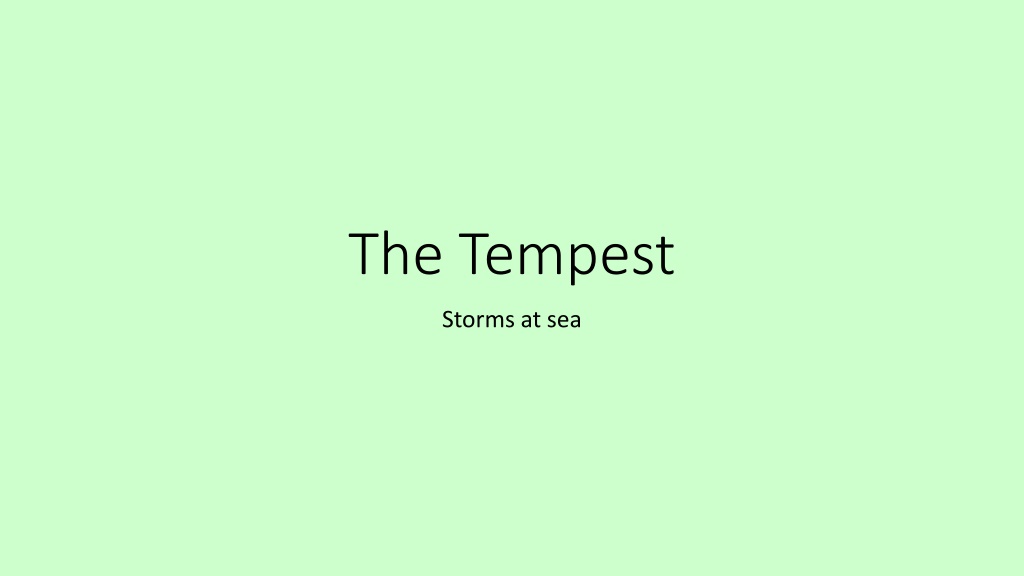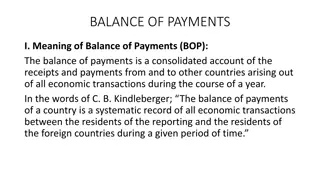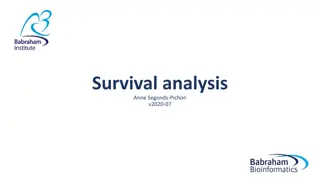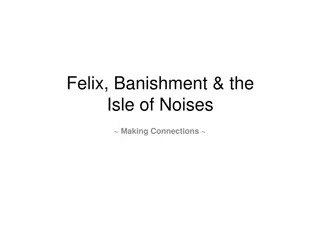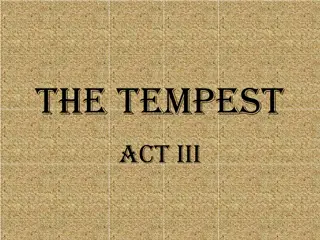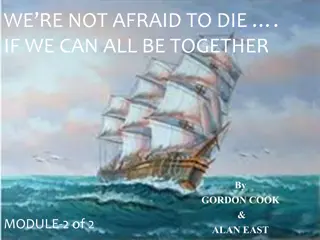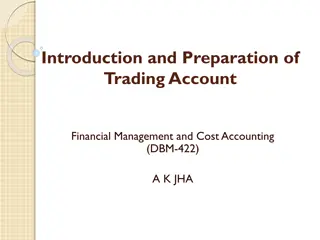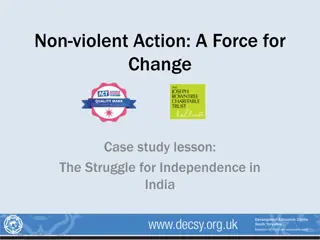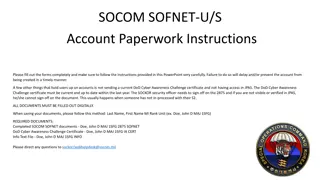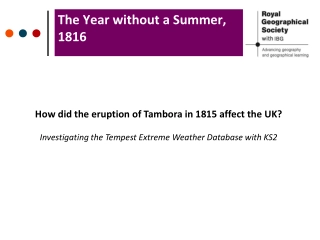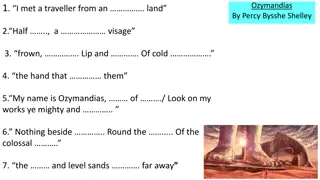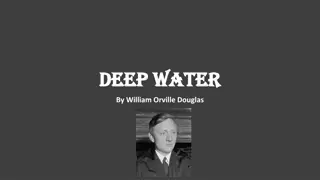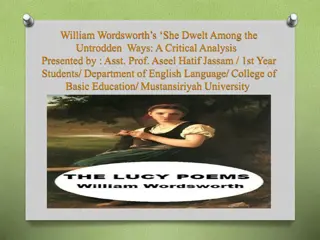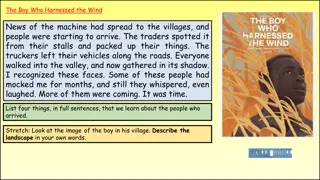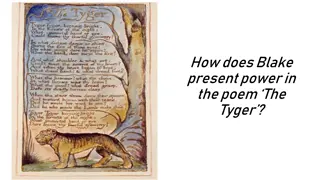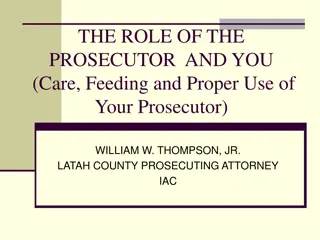Survival and Struggle: William Strachey's Account of The Tempest
William Strachey, a member of the Virginia Company, recounts the harrowing shipwreck of the Sea Venture on the Bermuda island in a storm. Despite mutiny attempts, survivors endured almost a year before reaching safety. Explore the challenges they faced and the possible influence on Shakespeare's play "The Tempest."
Download Presentation

Please find below an Image/Link to download the presentation.
The content on the website is provided AS IS for your information and personal use only. It may not be sold, licensed, or shared on other websites without obtaining consent from the author. Download presentation by click this link. If you encounter any issues during the download, it is possible that the publisher has removed the file from their server.
E N D
Presentation Transcript
The Tempest Storms at sea
A true reportory of the wracke by William Strachey (15721621) is the dramatic survivor s account of a most dreadfull Tempest and shipwreck on the Bermudas, and a probable source for Shakespeare s play. Although it was not printed until 1625, a manuscript version of Strachey s account was first circulated in England in 1610, when Shakespeare is thought to have seen it before writing The Tempest. 1. List four things you learn about William Strachey from the text. William Strachey was a member of the Virginia Company chartered by King James I to establish a colony in North America. He was a passenger on the Sea Venture, part of a fleet led by Admiral George Somer, that was heading for Virginia when it was struck by a terrible storme . The tempest sank one ship, dispersed the others, and drove the Sea Venture on to the rocky coast of the Bermudas. Strachey claims these Devils Ilands were feared and avoyded above any other place in the world but, like they became a place of miraculous deliverance for the passengers and crew. Despite several mutinous revolts, the survivors lived on the island for almost a year, and ultimately reached Jamestown, Virginia USA, in two newly-made boats. Strachey s account of the wreck in the Bermudas as a key source for the play. Aside from The Tempest s title, the violent storm and the island setting, Shakespeare may have been inspired by Strachey s vivid descriptions of the island and the sea. 2. What happened to the people on board the ship Sea Venture? Stretch: What does the phrase, Despite several mutinous revolts, the survivors lived on the island for almost a year suggest about what life was like for the survivors of the shipwreck?
If you were shipwrecked on a desert island with a group of strangers, how would you ensure your survival? Make sure to: list at least four ideas Explain your ideas Use the connective therefore Stretch: If you could take one thing with you to a desert island, what would it be and why?
During Shakespeares lifetime, exploration through the world was of great interest to the public and it is likely that Shakespeare read the accounts of sailors who had undertaken these journeys The Tempest is set on a tropical island and, as Shakespeare never travelled to one himself, he would have had to base his ideas and descriptions upon the accounts of others such as William Strachey
Extract from William Stracheys A true repertory of the wracke. How is language used for effect here? For four and twenty hours the storm in a restless tumult had blown so exceedingly as we could not apprehend in our imaginations any possibility of greater violence. Yet did we still find it not only more terrible but more constant, fury added to fury, and one storm urging a second more outrageous than the former, whether it so wrought upon our fears or indeed met with new forces. Sometimes strikes in our ship amongst women and passengers not used to such hurly and discomforts made us look one upon the other with troubled hearts and panting bosoms It could not be imagined the strength of the storm in which the sea swelled above the clouds and gave battle unto heaven. It could not be said to rain. The waters like whole rivers did flood in the air.
How does the writer use language to convey the horrors of the sea voyage? For four and twenty hours the storm in a restless tumult had blown so exceedingly as we could not apprehend in our imaginations any possibility of greater violence. Yet did we still find it not only more terrible but more constant, fury added to fury, and one storm urging a second more outrageous than the former, whether it so wrought upon our fears or indeed met with new forces. Sometimes strikes in our ship amongst women and passengers not used to such hurly and discomforts made us look one upon the other with troubled hearts and panting bosoms It could not be imagined the strength of the storm in which the sea swelled above the clouds and gave battle unto heaven. It could not be said to rain. The waters like whole rivers did flood in the air. Quotation Techniques Effect For four and twenty hours the storm in a restless tumult had blown Time reference, personification The writer uses a time reference four and twenty hours which helps to establish just how long the storm had been raging and which may shock the reader. In addition, the writer uses personification restless tumult with the adjective restless making it seem as though the storm is irritable and that it is constantly moving around the ship. more terrible but more constant, fury added to fury, Choose an additional two quotations to discuss. troubled hearts and panting bosoms Produce three analytical paragraphs in response to the task.
Extract from The Crossing by Ben Fogle How is language used for effect here? I watched as a vast wave gathered behind the boat, soaring above the cabin, a wall of white water towering over our tiny boat. Once again I dug the oars in to propel us forward, but the wave was too big. For a moment it felt like we were moving backwards as we were sucked into the belly of the wave, the horizon disappearing as the churning surf enveloped the stern of the boat. I felt it lift, as a torrent of water crashed over the boat and I felt myself falling backwards. I was aware of the boat collapsing on top of me. I struggled to pull my feet from the stirrups to no avail. The world went black. I felt a weight on top of me and then a rush of cold water as my body was brutally submerged into the bottomless Atlantic Ocean. My feet were sucked from my shoes as I clung on to the oars for dear life, but then they too were dragged from my clasp. My mind went blank as I tumbled through the surf, spun around roughly like clothes in a washing machine.
Source A For four and twenty hours the storm in a restless tumult had blown so exceedingly as we could not apprehend in our imaginations any possibility of greater violence. Yet did we still find it not only more terrible but more constant, fury added to fury, and one storm urging a second more outrageous than the former, whether it so wrought upon our fears or indeed met with new forces. Sometimes strikes in our ship amongst women and passengers not used to such hurly and discomforts made us look one upon the other with troubled hearts and panting bosoms It could not be imagined the strength of the storm in which the sea swelled above the clouds and gave battle unto heaven. It could not be said to rain. The waters like whole rivers did flood in the air. Compare how the writers convey the horror of the storms at sea they experienced. The writer of Source A clearly felt the storm he was experiencing was violent. He makes use of nouns such as tumult and violence which help to create the image of the ship being engaged in battle with the storm. In addition, his use of personification, fury added to fury , helps to further develop the idea of the storm victimizing the people on board the ship and of it unleashing violent anger upon them. Similarly, the writer of Source B also establishes the idea of the storm he experienced as being very violent and unmerciful. As in Source A, he also makes use of personification in order to convey the horror of the storm, we were sucked into the belly of the wave . However, unlike Source A which used personification to make the storm seem angry, here personification is used to help convey the size of the waves whipped up by the storm and to create a monstrous image of the sea with the writer creating the idea of the waves swallowing the tiny ship and with the ship ending up in the belly of the sea, implying death and destruction. Source B I watched as a vast wave gathered behind the boat, soaring above the cabin, a wall of white water towering over our tiny boat. Once again I dug the oars in to propel us forward, but the wave was too big. For a moment it felt like we were moving backwards as we were sucked into the belly of the wave, the horizon disappearing as the churning surf enveloped the stern of the boat. I felt it lift, as a torrent of water crashed over the boat and I felt myself falling backwards. I was aware of the boat collapsing on top of me. I struggled to pull my feet from the stirrups to no avail. The world went black. I felt a weight on top of me and then a rush of cold water as my body was brutally submerged into the bottomless Atlantic Ocean. My feet were sucked from my shoes as I clung on to the oars for dear life, but then they too were dragged from my clasp. My mind went blank as I tumbled through the surf, spun around roughly like clothes in a washing machine.
Source A For four and twenty hours the storm in a restless tumult had blown so exceedingly as we could not apprehend in our imaginations any possibility of greater violence. Yet did we still find it not only more terrible but more constant, fury added to fury, and one storm urging a second more outrageous than the former, whether it so wrought upon our fears or indeed met with new forces. Sometimes strikes in our ship amongst women and passengers not used to such hurly and discomforts made us look one upon the other with troubled hearts and panting bosoms It could not be imagined the strength of the storm in which the sea swelled above the clouds and gave battle unto heaven. It could not be said to rain. The waters like whole rivers did flood in the air. Source B I watched as a vast wave gathered behind the boat, soaring above the cabin, a wall of white water towering over our tiny boat. Once again I dug the oars in to propel us forward, but the wave was too big. For a moment it felt like we were moving backwards as we were sucked into the belly of the wave, the horizon disappearing as the churning surf enveloped the stern of the boat. I felt it lift, as a torrent of water crashed over the boat and I felt myself falling backwards. I was aware of the boat collapsing on top of me. I struggled to pull my feet from the stirrups to no avail. The world went black. I felt a weight on top of me and then a rush of cold water as my body was brutally submerged into the bottomless Atlantic Ocean. My feet were sucked from my shoes as I clung on to the oars for dear life, but then they too were dragged from my clasp. My mind went blank as I tumbled through the surf, spun around roughly like clothes in a washing machine. Compare how the writers convey the horror of the storms at sea they experienced. Source A What? The writer of Source A felt Quote How? In the quotation, the writer uses . To show Source B Comparison - Similarly, the writer of Source B also How? The writer uses to show
What knowledge have you learnt today? What skills have you learnt/developed today? How has your previous learning helped you today?
